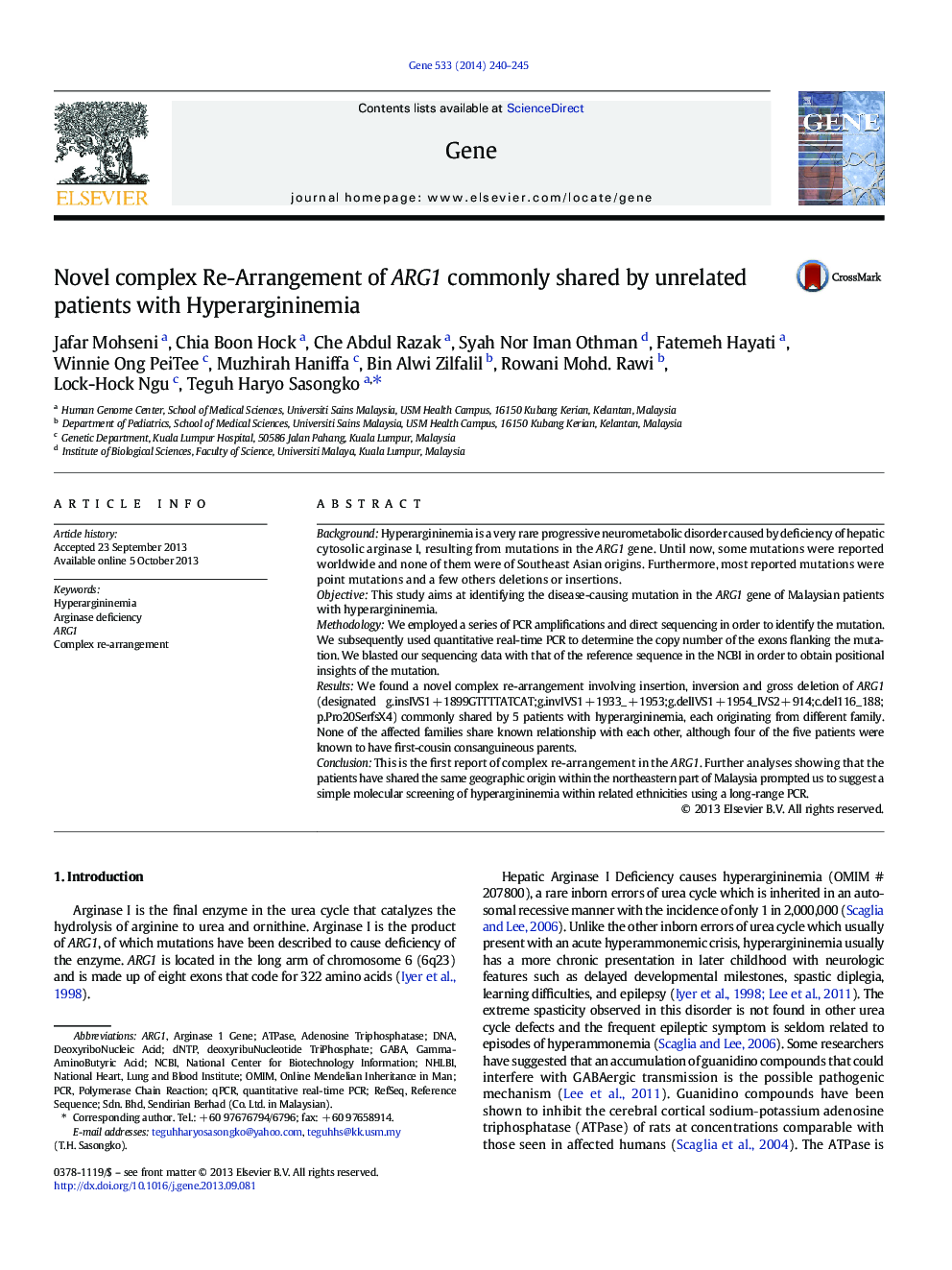| Article ID | Journal | Published Year | Pages | File Type |
|---|---|---|---|---|
| 2816729 | Gene | 2014 | 6 Pages |
•First report of complex re-arrangement mutation in ARG1 gene.•First report of ARG1 mutation among Hyperargininemia patients of South-East Asian.•The mutation was found to be common in un-related patients with Hyperargininemia.•The finding led to simple screening method for the disorder among similar ethnicities.
BackgroundHyperargininemia is a very rare progressive neurometabolic disorder caused by deficiency of hepatic cytosolic arginase I, resulting from mutations in the ARG1 gene. Until now, some mutations were reported worldwide and none of them were of Southeast Asian origins. Furthermore, most reported mutations were point mutations and a few others deletions or insertions.ObjectiveThis study aims at identifying the disease-causing mutation in the ARG1 gene of Malaysian patients with hyperargininemia.MethodologyWe employed a series of PCR amplifications and direct sequencing in order to identify the mutation. We subsequently used quantitative real-time PCR to determine the copy number of the exons flanking the mutation. We blasted our sequencing data with that of the reference sequence in the NCBI in order to obtain positional insights of the mutation.ResultsWe found a novel complex re-arrangement involving insertion, inversion and gross deletion of ARG1 (designated g.insIVS1 + 1899GTTTTATCAT;g.invIVS1 + 1933_ + 1953;g.delIVS1 + 1954_IVS2 + 914;c.del116_188;p.Pro20SerfsX4) commonly shared by 5 patients with hyperargininemia, each originating from different family. None of the affected families share known relationship with each other, although four of the five patients were known to have first-cousin consanguineous parents.ConclusionThis is the first report of complex re-arrangement in the ARG1. Further analyses showing that the patients have shared the same geographic origin within the northeastern part of Malaysia prompted us to suggest a simple molecular screening of hyperargininemia within related ethnicities using a long-range PCR.
